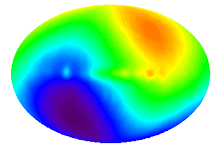Composition of the Gut Microbiota
It is estimated that up to 80% of the bacteria in the human gut cannot be cultivated by
conventional techniques, largely because of their
fastidious nutrient and anaerobic requirements and their complex dependence on
one another.
Molecular techniques have significantly
advanced our understanding of the constituent members of the human microbiome
and have largely supplanted cultivation-based techniques for study of the gut
microbiome.
The most diverse and abundant microbial communities
generally occur in the oral cavity and distal GI tract and have been the focus
of most studies, because they are most amenable to sampling. However, the
relatively simple indigenous microbiota of the human esophagus, stomach, and
small bowel are relatively unstudied, and these niches present the added
challenge of trying to discern allochthonous bacteria (“passersby” from
upstream niches that are likely irrelevant) from autochthonous microbes
(representing stable, functionally relevant community “residents”). The oral
cavity contains members of the phyla Firmicutes, Proteobacteria, Bacteroidetes,
Actinobacteria, and Fusobacteria, which account for 99% of all phyla present.
It has been estimated
that the microbes in our bodies collectively make up to 100 trillion cells,
tenfold the number of human cells, and suggested that they encode 100-fold more
unique genes than our own genome. The majority of microbes reside in the gut,
have a profound influence on human physiology and nutrition, and are crucial
for human life
the gut microbes
contribute to energy harvest from food, and changes of gut microbiome may be
associated with bowel diseases or obesity
Essentially all
(99.1%) of the genes of our catalogue are of bacterial origin, the remainder
being mostly archaeal, with only 0.1% of eukaryotic and viral origins.
To understand the
impact of gut microbes on human health and well-being it is crucial to assess
their genetic potential. Here we describe the Illumina-based metagenomic
sequencing, assembly and characterization of 3.3 million non-redundant
microbial genes, derived from 576.7 gigabases of sequence, from faecal samples
of 124 European individuals. The gene set, ~150 times larger than the human
gene complement, contains an overwhelming majority of the prevalent (more
frequent) microbial genes of the cohort and probably includes a large
proportion of the prevalent human intestinal microbial genes. The genes are
largely shared among individuals of the cohort. Over 99% of the genes are
bacterial, indicating that the entire cohort harbours between 1,000 and 1,150
prevalent bacterial species and each individual at least 160 such species,
which are also largely shared. We define and describe the minimal gut
metagenome and the minimal gut bacterial genome in terms of functions present
in all individuals and most bacteria, respectively.

沒有留言:
張貼留言